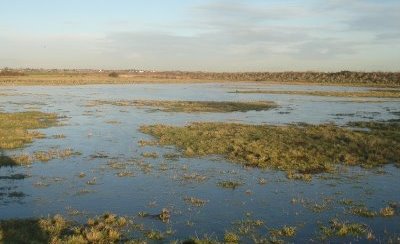
Habitat management is the most important part of wildlife management, and it’s no different when trying to manipulate lands for waterfowl. Ducks and geese readily respond to flooded lands that offer high quality foods for foraging. Almost any property has some area that can be modified and enhanced to provide wetland habitat, particularly upland depressions, but it will take implementing wetland management practices to see results.
Upland depressions are areas that occur in native or improved pastures or even in low areas within wooded or forested areas. These are depressions that are found on dry land (upland). Some management techniques that can be used to create better waterfowl feeding and hunting areas from depressions include the following practices.
Construct embankments and/or water control structures to enhance or create a wetland and to allow for water level manipulation. This may also involve a simple water control structure. Hold a shallow flood during the fall, winter, and spring. Drain the wetland and allow natural vegetation to recover during the summer months. This will serve as a great site for duck foods to grow.
Plant ducks crops. This is a straight-forward way to enhance wetland areas and directly supply food for nesting or wintering waterfowl. If you plan to hunt the area, make sure you are familiar with federal baiting laws first! Landowners can encourage the establishment and production of tall vegetative species along the perimeter for cover. To improve the nesting habitat more quickly, plant the perimeter with water tolerant trees, shrubs, or tall grasses, such as switchgrass and buttonbush (buttonwillow).
It is highly recommended that livestock be fenced out to prevent overgrazing of beneficial duck and goose foods. Overgrazing will prevent the seeding of many forbs and can also impact planted forbs, shrubs, and trees. The increased amount of cover from deferred grazing will provide nesting habitat for ground-nesting ducks, but landowners interested in cavity-nesting ducks, such as wood ducks, should install nesting boxes with predator guards.
To sum up, many areas can be worked into a wetland management program, but changes in land use practices will have to be changed or adapted. For landowners interested in wetlands, waterfowl, or duck hunting the results can be well worth the effort. And not only will you have fun doing it, seeing waterfowl loaded up on your wetland will bring a smile to your face. Good luck!